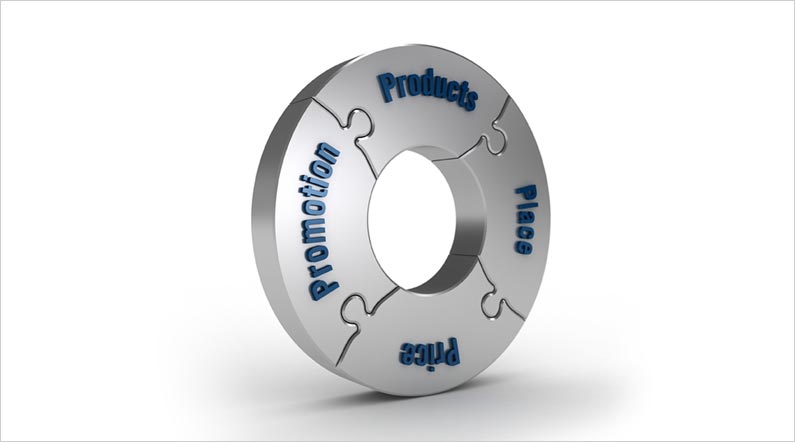Of the “Marketing 4 P’s” – product, pricing, promotion and place (distribution), can anyone argue that the first “P”, product, isn’t the most important? Great pricing, promotion or distribution strategy can’t save the wrong product, or product mix.
OK, so who out there is thinking about what their product mix should look like 5, 10, or even 20 years from now? It takes having a keen sense for long-term customer trends and the foresight to build the right product (or service) portfolio to match those trends. We know Wall Street doesn’t reward companies for this kind of long-term thinking, but five years from now will soon be your “next quarter”, so you better start your thinking…and think big!
A Case Study
PepsiCo and Coca-Cola provide a thought provoking case study that highlights two companies who have had very different success with their product portfolio development. To get your attention:
With soft drink sales declining 10% year over year for the past few years, how is it that PepsiCo finds itself in a position where 25% of its US revenue comes from soft drinks, while Coca-Cola derives 60% of its revenue from soft drinks?
These are both great organizations with very smart marketers, yet only one finds itself well positioned with a diverse product portfolio that’s aligned with consumer trends. Consider this: Over the past 20 years or so, PepsiCo has purchased Tropicana to capture the #1 position in the chilled juice category and Gatorade to capture the #1 position in the sports drink category (75% share v. Coca-Cola PowerAde’s 20% share) and was the first to enter the burgeoning bottled water category with its Aquafina brand. Coca-Cola also has major brands in these important segments, but all have consistently lagged behind the PepsiCo brands.
Even PepsiCo’s Frito-Lay business unit, which makes up roughly 30% of company revenue, has grown +3.1% of the past year driven by product and marketing innovation. Many would consider much of the Frito-Lay snacks product line to be “off trend” from a health perspective, but the Frito-Lay team has acted upon their deep understanding of their customers with both “better for you” products and out of the box marketing campaigns designed to relate to their customer’s more technology-focused social media needs (e.g. voting for Lay’s Potato Chip flavors or user-generated Super Bowl ads for Doritos).
Finally, PepsiCo recently announced they’re removing Aspartame from Diet Pepsi. Per USA Today, “To Diet Pepsi consumers, removing aspartame is their No. 1 one concern,” says Seth Kaufman, senior vice president of Pepsi and flavors, in a phone interview. “We’re listening to consumers. It’s what they want.”
Beaten to the Punch
One could argue that PepsiCo has beaten Coca-Cola to the punch each step of the way from both a product and marketing innovation perspective. This doesn’t happen by accident. It takes: 1) vision 2) a “culture of curiosity” around evolving consumer trends, and 3) perhaps most importantly, a willingness to take bold actions to innovate around your product portfolio.
It is in this last area, we argue, that PepsiCo has operated very differently than Coca-Cola. Both companies certainly have a vision for dominance across the beverage spectrum and both companies are spending millions of dollars on big consumer/category insights research, but it is PepsiCo who has been bold in the strategic development of their portfolio.
And the company’s respective stock price reflects these differences with PepsiCo up over +10% in the last year, and Coca-Cola essentially flat.
What You Can Do
So what can you do to ensure your product line is up to snuff and meeting your customer’s evolving needs?
Start by asking your customers about their most significant problems/pain points with your product(s) and broad set of category offerings. But don’t, as many organizations do, just sit on this information. Knowledge is great, but you need to push yourself to identify creative product solutions that will solve their problems!
- If it’s a product specific issue, it could potentially be addressed through a product change such as removing Aspartame from Diet PepsiCo OR
- If it’s a broader category issue, it may need to be addressed through either more dramatic product innovation, or through creating or entering a new category, as PepsiCo has done over the years with its entries into sports drinks, chilled juices, waters and other healthier, functional beverages.
What are your customer’s pain points? Are they product specific or do they apply to the broader category?
You must also look at broader macro-trends and think about how these may impact your product portfolio and/or your overall category in the short and long-term. Examples of macro-trends are “personalization”, “the impact of technology” (e.g. Netflix vs. Blockbuster) or “sustainability”.
A lot to consider we know, but that’s why you sit in the C-suite (or close to it). So what are you doing to ensure your product offering matches what your customer needs will look like 5 years from now…or 10 years from now? It will be here a lot sooner than you think!


Recent Comments